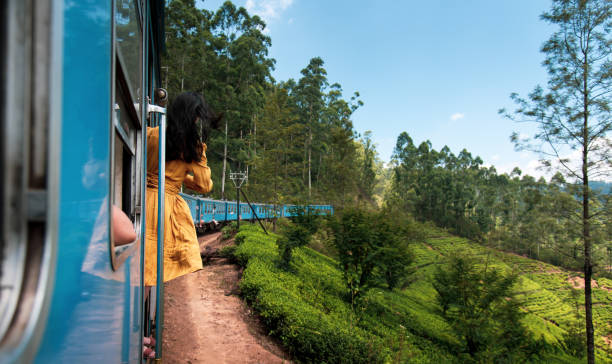In an era where speed dominates travel—high-speed trains, express flights, and digital nomads zipping across borders—there is a quiet counterculture embracing the slowest, most time-consuming journeys. These travelers intentionally avoid efficiency, choosing methods of transport that take days, weeks, or even months to reach their destination. Why? Because the journey itself becomes the experience.
The Slowest Ways to Travel
1. Walking: The Ultimate Slow Travel Experience
Before the invention of modern transportation, walking was the only way to travel long distances. Today, long-distance walkers embrace this ancient mode of movement for a deeper connection with the land and people they encounter.
- Famous walking journeys include the Camino de Santiago in Spain and the Appalachian Trail in the U.S.
- Some extreme adventurers have walked across entire countries or even continents, taking years to complete their journey.
2. Bicycle Touring: Pedaling Across the World
Cycling is faster than walking but still much slower than conventional transport. Long-distance bike travelers embrace the challenge of crossing borders on two wheels, fully immersed in the landscapes they pass.
- Some take months or years to complete epic cycling journeys, such as biking from Europe to Asia or across South America.
- It’s a sustainable, cost-effective way to travel that fosters self-sufficiency.
3. Cargo Ships and Sailing: The Slowest Way Across Oceans
For those looking to cross vast distances without flying, traveling by cargo ship or sailboat is an option. While passenger travel on cargo ships is rare, some shipping lines offer cabins for long-haul crossings that take weeks instead of hours.
- Sailors on personal boats or yachts spend months at sea, moving at the mercy of the wind and waves.
- These journeys offer solitude, a deep connection to nature, and an old-world sense of adventure.
4. Hitchhiking and Ride-Sharing: The Unpredictable Road Trip
Hitchhiking isn’t just about saving money—it’s also a way to embrace randomness and let the journey dictate the experience. Some travelers take months to hitchhike across entire continents, meeting strangers and going wherever the road takes them.
- Unlike scheduled transport, hitchhiking is unreliable, making it one of the slowest ways to get around.
- The appeal lies in the unexpected encounters and stories that emerge from the journey.
5. Horseback and Animal-Powered Travel: The Historic Method
In some remote areas, traditional forms of transport like horseback riding, camel caravans, or reindeer sledding are still used for travel. While incredibly slow, these methods connect travelers to ancient traditions.
- Some adventurers embark on cross-country horseback journeys, following historical migration routes.
- Riding camels through the Sahara or dog sledding in the Arctic offers a travel experience rooted in local heritage.
Why Do People Choose Slow Travel?
1. Deeper Connection to the Journey
When travel is slow, every mile is felt. The landscapes, weather changes, and cultural shifts become more pronounced compared to the blur of a high-speed train or airplane.
2. More Meaningful Cultural Encounters
Fast travel often limits interactions to tourist hotspots, but slow travelers immerse themselves in local communities, forming genuine connections with people they meet along the way.
3. Sustainability and Minimal Environmental Impact
Many slow travel methods, such as walking, cycling, or sailing, have a significantly lower carbon footprint than flying. Travelers who prioritize eco-conscious journeys often prefer slower, more sustainable transport.
4. Personal Growth and Challenge
Slow travel demands patience, resilience, and adaptability. It forces travelers to confront discomfort, embrace uncertainty, and develop self-sufficiency.
In a world obsessed with efficiency, slow travel offers a refreshing alternative—one that prioritizes experience over speed. Whether it’s walking across a country, cycling through remote landscapes, or sailing across an ocean, choosing the slowest way to travel isn’t just about reaching a destination—it’s about redefining the journey itself.

